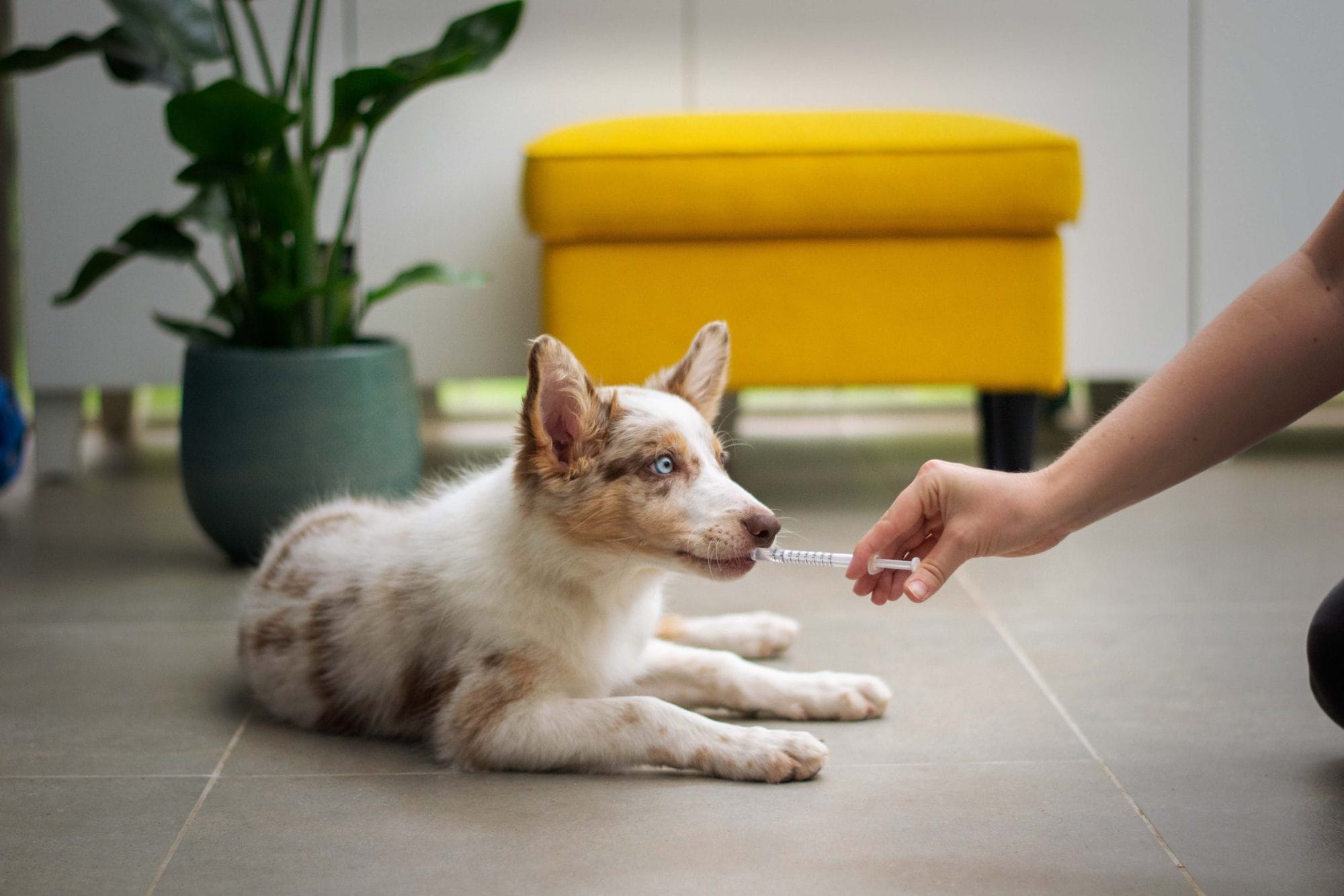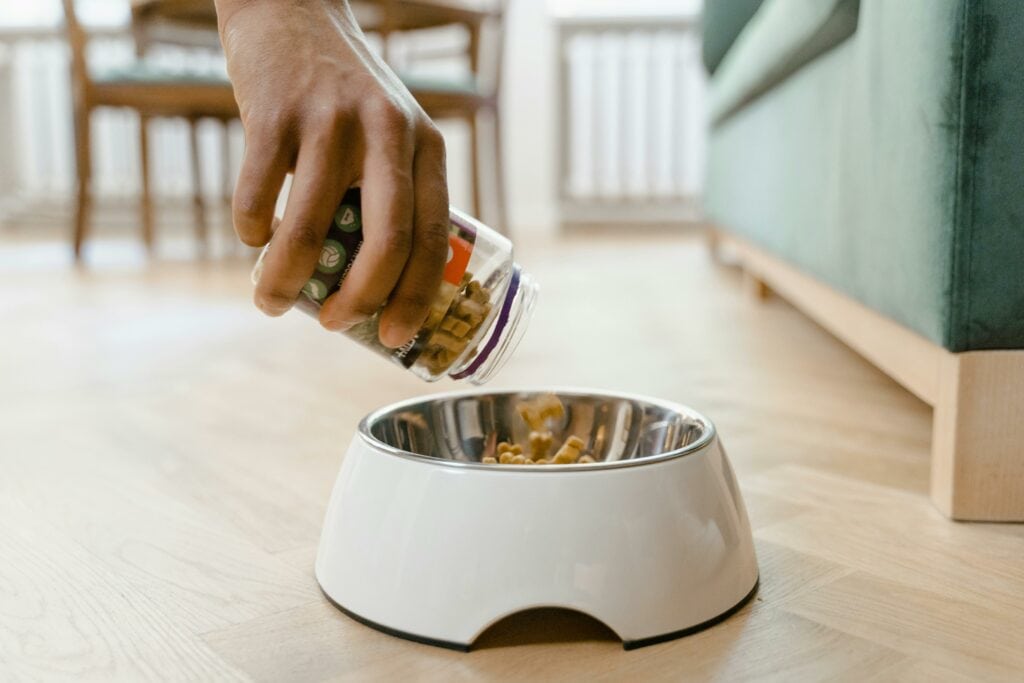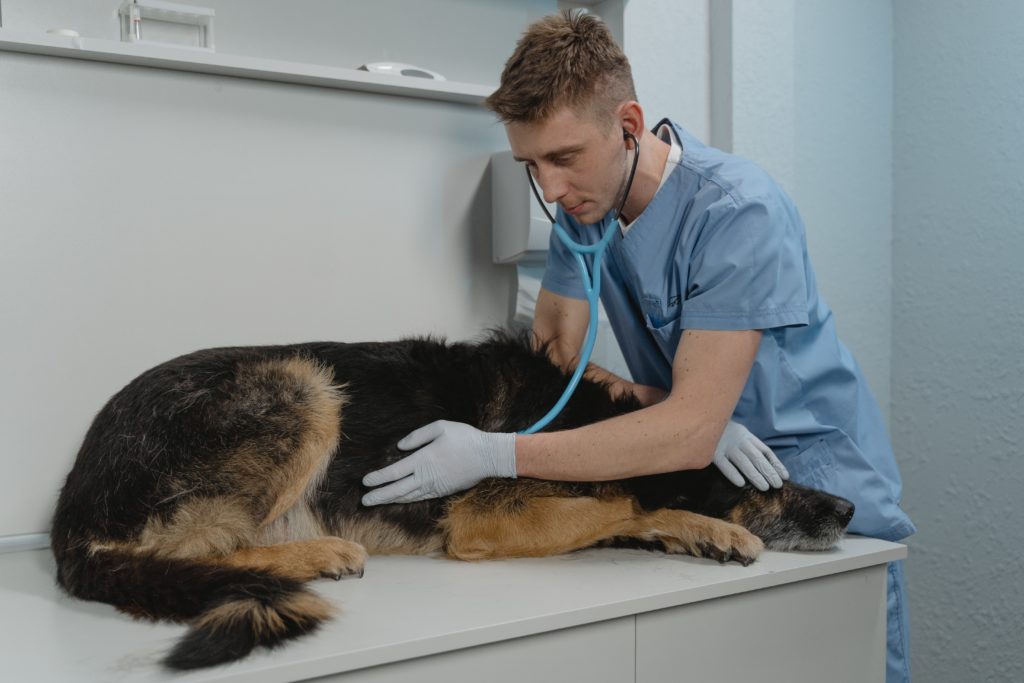What is it?
Atopic dermatitis (environmental allergies) is a type of skin allergy directed against environmental substances (allergens) such as pollens (from weeds, trees, and grasses), mold spores, or dust mites in the house. When pollens are released by plants, they travel in the air for miles before they settle to the ground, so don’t get hung up on what is growing in a patient’s backyard- it doesn’t matter. Atopic dermatitis is a hereditary condition, meaning puppies and kittens inherit the genes from their parents. It is caused by a combination of immune system dysregulation (the immune system overreacts to harmless substances) and a weakened skin barrier (pollens can penetrate into the skin more easily).
What are the signs?
Pruritus (itching) and erythema (redness) are the most common signs, and usually affect the face, feet, ears, flexural surfaces (anywhere there’s a body fold such as elbows, armpits, and groin), and the ventrum (belly). Patients with atopic dermatitis get frequent skin and ear infections with bacteria and yeast, which will make them even more itchy. Signs usually develop between 1-3 years of age, but a smaller subset will get allergies before a year of age or later like 5-6 years. For some patients, their itch will be seasonal, meaning they flare up during a certain time of year. In TX, we have so many pollens in the air year round that our patients are often itchy all year long. Any breed can get atopic dermatitis, but some breeds are very predisposed such as the Westie, French Bulldog, Golden Retriever, Labrador Retriver, English Bulldog, and any type of terrier. The itch from atopic dermatitis usually responds really well when placed on allergy-blocking, anti-itch medications such as Temaril-P, prednisone, Atopica, or Apoquel.
How is atopic dermatitis diagnosed?
There is no single test to diagnose atopic dermatitis. Instead, the diagnosis is made by finding consistent signs in the history (age of onset, seasonality, consistent breed, steroid-responsive) and physical exam (paws, ventrum, axillae, ears affected), and by excluding other diseases such as food allergy, flea allergy, and scabies. Many people mistakenly think that the intradermal allergy test is used to diagnose atopic dermatitis, but this is not correct. The intradermal allergy test is used to identify which specific allergens the patient reacts against in order to formulate the correct recipe for immunotherapy (“allergy shots”). Even normal dogs can have positive reactions on the intradermal allergy test, so this test should only be performed after the clinician has determined the patient indeed has atopic dermatitis. There are blood tests available as an alternative to intradermal allergy testing, but studies have shown that their results are not very accurate (they don’t match up with intradermal allergy testing in the same patient; and if the same blood sample is sent to 2 different blood test companies, the results will be totally different). For that reason, we do not perform blood allergy tests here.
How is the intradermal allergy test performed?
The test will be suppressed by a number of medications, so patients have to be off topical steroids (including many ear medications) for 2 weeks, antihistamines and oral steroids for 3 weeks, and long-acting injectable steroids (DepoMedrol, Vetalog, Kenalog, etc) for 6-8 weeks. Acepromazine has some antihistamine activity, so the 3 week rule applies to it as well. It’s ok for patients to be on Atopica, Apoquel, and fish oils before the test. Patients are given a mild sedative (a small amount of Dex-Domitor) and a 2”x4” rectangle is shaved on their left side. If they have a severe infection with lots of bumps or crusts in that area, that may have to be treated for a few weeks beforehand so we have a healthy area of skin to perform the test on. A grid of dots are drawn on the shaved area (3 rows with 6 dots each) and then intradermal injections of each important allergen are injected above and below each dot. The clinician will wait 10-15 minutes after the injections are complete, and then read the test. Each reaction is compared to the positive control (Histamine, rated 4+) and the negative control (Saline, rated 0+) and assigned a number 0-4+ based on redness, size of wheal reaction, and firmness. The immunotherapy (“allergy shots”) will be created based on the positive reactions that each patient has (every pets recipe will be different).
How is atopic dermatitis treated?
Allergies in pets are controlled but never cured, so lifelong treatment of some kind is almost always needed. Allergies in pets tend to get worse every year, unlike children who often “grow out” of their allergies. Multimodal treatment is often needed to control atopic dermatitis, meaning multiple types of treatments. The safest long-term treatment is allergen-specific immunotherapy (what people often call “allergy shots”). By giving the pet small, frequent amounts of the pollens they are allergic to, we can desensitize the immune system so they stop over-reacting to these harmless substances in the environment. Immunotherapy comes in 3 forms: subcutaneous injections (SCIT), sublingual oral drops (SLIT), or intralymphatic immunotherapy (ILIT). With SCIT, pet owners are taught to give the injections underneath the skin at home. The injections are given once weekly for 1-2 months in increasing amounts and strength to work up to full strength (exact injection schedule is provided to patients), and then every 14 days long-term. With SLIT, the sublingual oral drops are squirted beneath the tongue once to twice daily long-term. Both SCIT and SLIT have about an 80% success rate and have basically no long-term side effects. A small percentage of patients will have allergic reactions in the first couple months of treatments (hives, facial swelling, or increased itch with injections / facial itching with sublingual). SCIT and SLIT take time to start working: we usually see results in the first 3-6 months, but it can take up to 1 year to start working, so we always have to use other symptomatic therapy to keep them comfortable in the meantime. If immunotherapy is successful, patients usually stay on it for life, getting a refill of the the immunotherapy serum every 6 months. Intralymphatic Immunotherapy (ILIT) is the newest form of immunotherapy. With ILIT, a small amount of immunotherapy is injected by a dermatologist into a popliteal lymph node (behind the knee) once monthly for 5 months. About 50% of patients achieve long-term control of their allergy symptoms after the 5th month. Patients that don’t achieve long-term remission with the lymph node injections can switch over to SCIT or SLIT for long-term control. Side effects are uncommon but can include pain at injection site or very rarely, anaphylaxis. Sedation is not usually needed for the lymph node injections.
Other symptomatic therapies include antihistamines (very safe, mild drowsiness often resolves after 2 weeks, only effective in about 10-20% of patients as a sole therapy), omega-3 fish oils (take a few months to start working, 180mg EPA per 10 lbs of body weight, can slowly lower allergies and improve skin/coat health, rarely effective as sole therapy), steroids (almost always work for itch relief but not safe long-term; short term side effects include increased thirst, urination, hunger, and panting; long-term side effects include immune suppression, increased skin infections, urinary infections, demodex, weight gain, muscle loss, elevated liver enzymes, possible increased cruciate tears, and calcinosis cutis; avoid injectable, try to get down to lowest every-other-day dose), cyclosporine (Atopica or Cyclavance) (30% have GI side effects, can be expensive, long-term side effects include urinary infections, overgrowth of gums, and possible fungal infections), Apoquel (newer drug, works in 70% or patients, somewhat expensive, usually well tolerated, longterm use may suppress the immune system in some patients), and CytoPoint (newer drug, injected once monthly, works in 70% of patients, expensive, appears to be very safe long-term). Most allergic patients also benefit from frequent ear flushing and bathing, which will help prevent infections and reduce the amount of pollens they absorb. There are also some topical oils that can help strengthen the skin barrier, such as Essential 6 Spot-On and Atop7 by Dermascent and Atopivet Spot-On and Atopivet collar by Dechra. Our general goal is to maximize the use of safe treatments (immunotherapy, bathing, antihistamines, fish oils) so we can use the least possible amount of risky drugs (steroids, Atopica, Apoquel).





